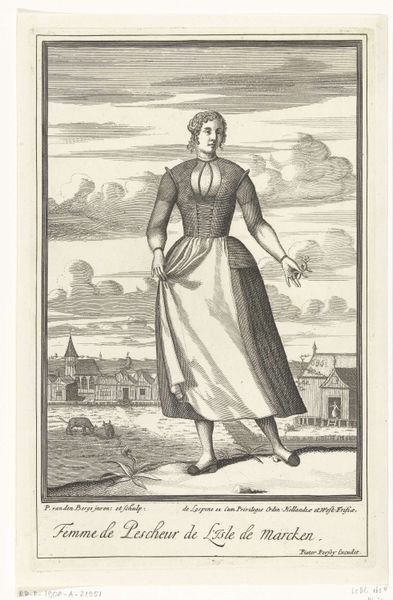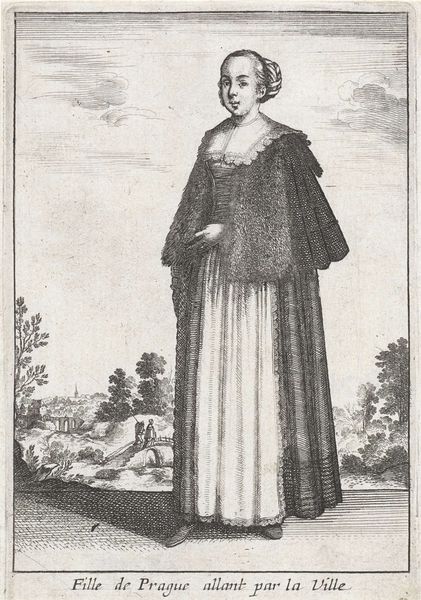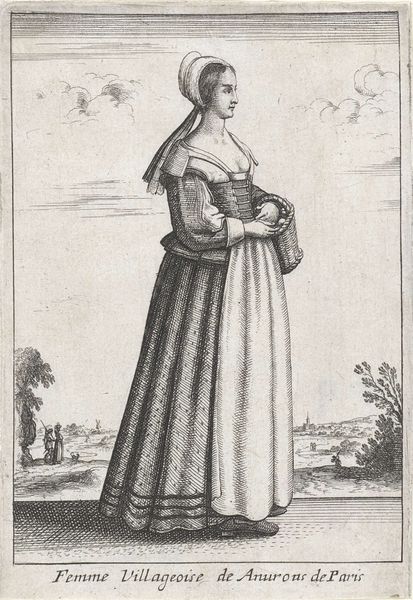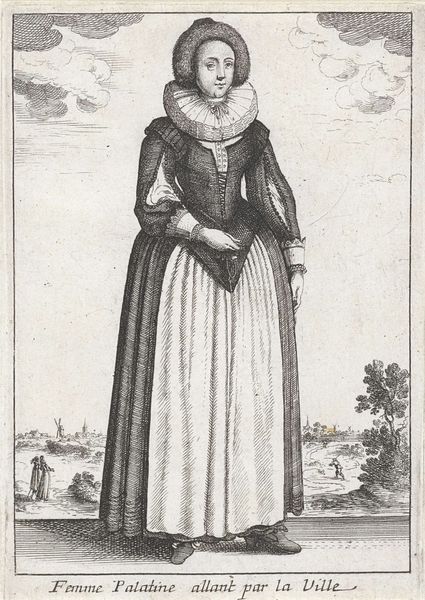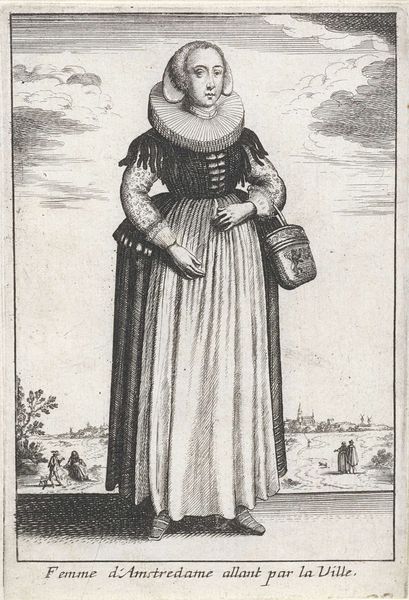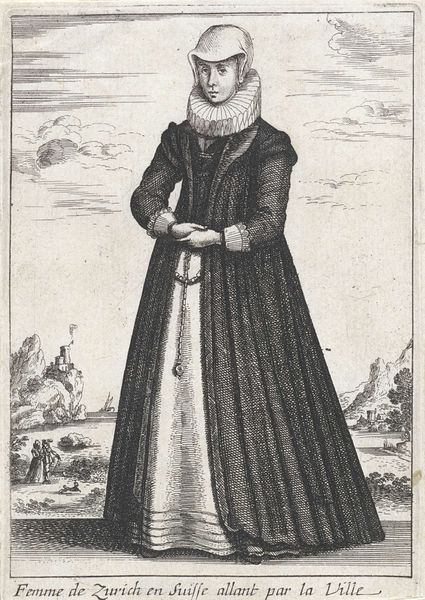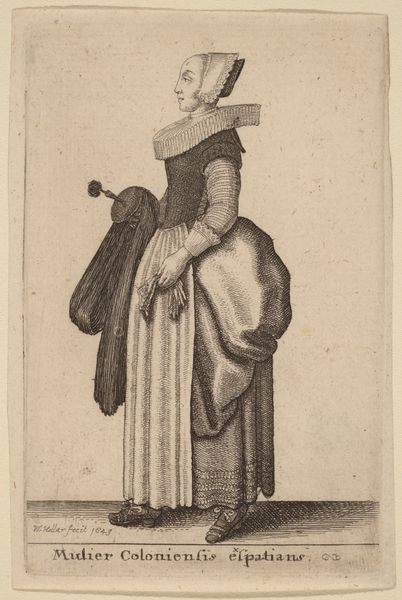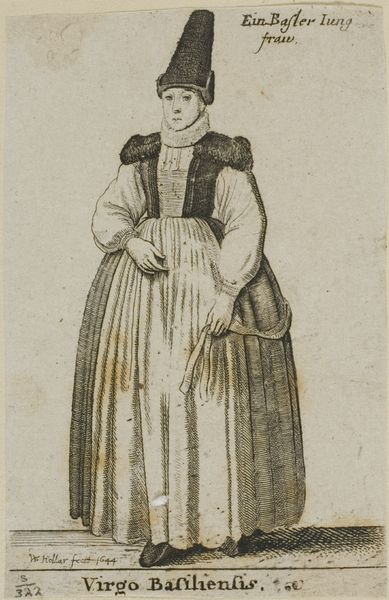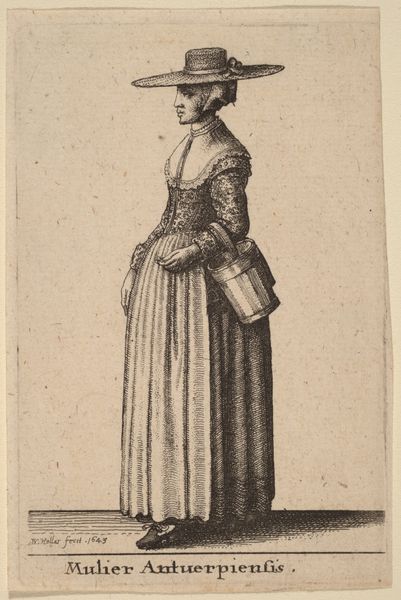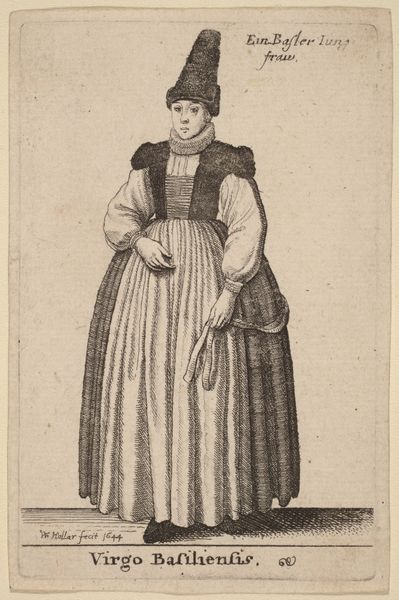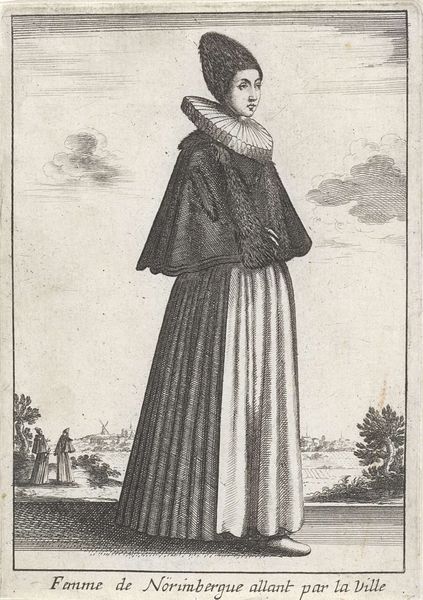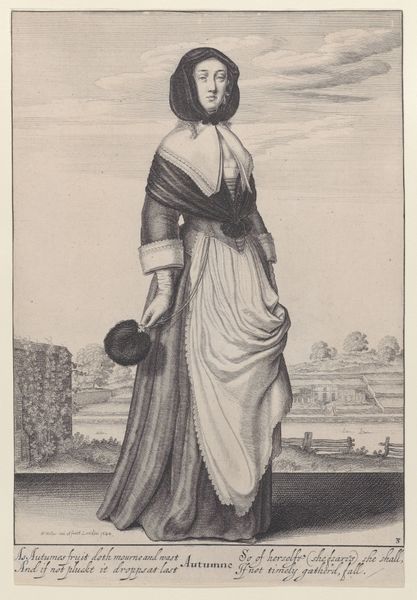
print, engraving
#
portrait
#
baroque
#
dutch-golden-age
# print
#
figuration
#
genre-painting
#
engraving
Dimensions: height 276 mm, width 175 mm
Copyright: Rijks Museum: Open Domain
Editor: So, here we have “Boerin uit Vlieland,” a print by Pieter van den Berge, sometime before 1689. It's an engraving of a farm woman. There’s a kind of quiet dignity in her stance that really strikes me. What symbols do you see at play in this work? Curator: It's fascinating how van den Berge captures a sense of place and identity through seemingly simple choices. Note how the clothing itself speaks volumes: the neat cap, the practical layers. These aren’t just garments; they are symbols of a specific community, Vlieland, and its connection to the sea and land. This imagery, repeated and reinforced in art, would have strengthened a collective identity. Does her clothing seem practical or special to you? Editor: Practical, definitely. Functional but also identifying. Does that tie into a larger tradition? Curator: Precisely. This image taps into a visual language that had developed throughout the Dutch Golden Age. The upright stance suggests an unflinching strength that would likely resonate with her intended audience. Consider also the background: not some idealized landscape, but an ordinary farm, implying the dignity of everyday life. Does it seem propagandistic in some way? Editor: Interesting. Not necessarily propagandistic but more like a proud celebration of ordinary people. Curator: Exactly. It’s in images like these that cultural memory is forged. Editor: So it becomes more than just a portrait; it's a visual record of a particular way of life and identity. Curator: Precisely. These symbols connect to our current view of what the Dutch Golden age meant, or hoped to be seen as. A visual language is a way of communicating pride.
Comments
No comments
Be the first to comment and join the conversation on the ultimate creative platform.
